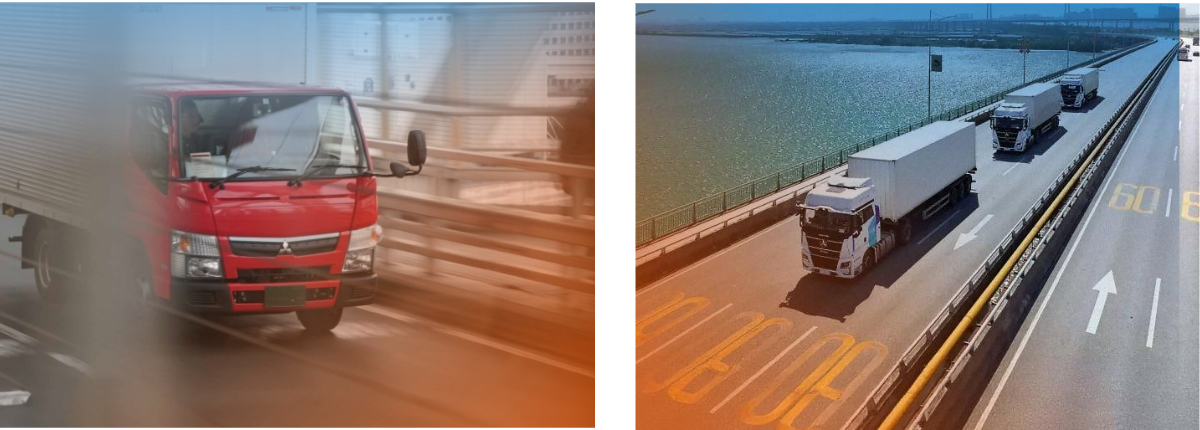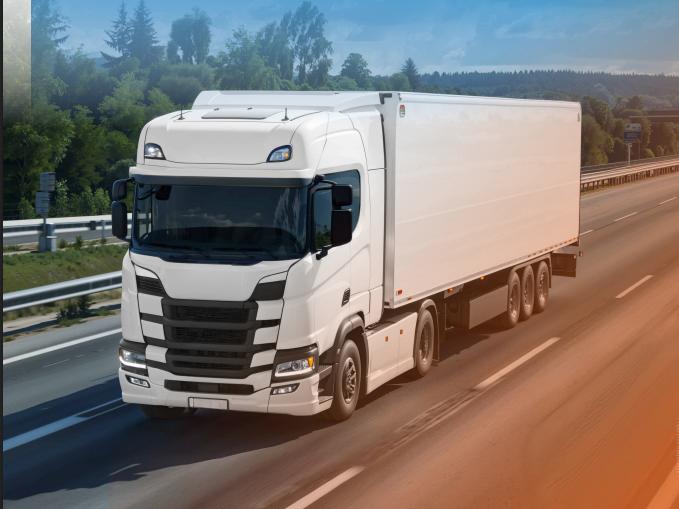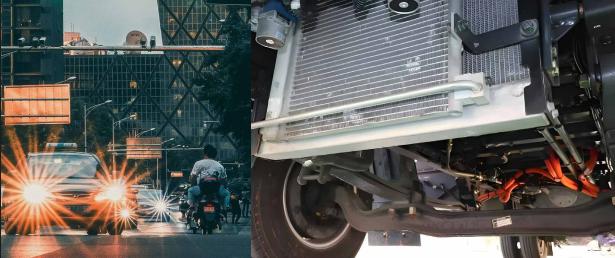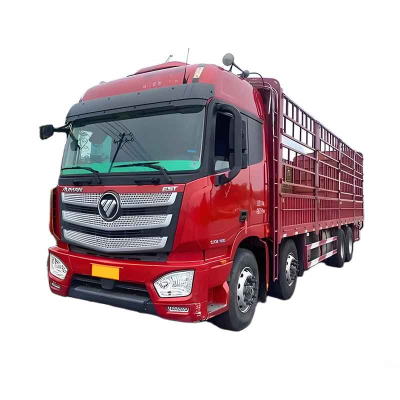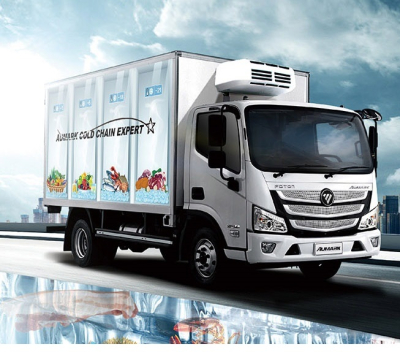China's Zero-Emission Heavy-Duty Trucks Policy Progress, Development Challenges, and Recommendations
Globally, greenhouse gas and pollutant emissions from the transportation sector cannot be ignored. In 2022, the U.S. transportation sector accounted for 28% of its greenhouse gas emissions. China's transportation sector accounts for approximately 10% of the country's total carbon emissions. Heavy trucks are also a major source of pollutants such as nitrogen oxides and particulate matter. According to the "China Mobile Source Environmental Management Annual Report 2023," heavy truck nitrogen oxide emissions accounted for 76% of total vehicle emissions in 2022. According to the "2023 Transportation Industry Development Statistical Bulletin" released by China's Ministry of Transport, by the end of 2023, the transportation industry had 11.7097 million trucks and 172.1671 million tons of freight, an increase of 43,000 vehicles and 2.4938 million tons, respectively, compared to the end of the previous year. Among them, tractors accounted for 3.7037 million units, an increase of 161,900. The annual road freight turnover reached 739.5 billion ton-kilometers, a 6.9% increase. Overall, the freight industry's vehicle ownership and freight volume continued to grow. Against the backdrop of China's "dual carbon" goals, the replacement of heavy-duty trucks with zero-emission equipment has become an inevitable trend. Major countries and regions around the world have also begun to prioritize decarbonization in the heavy-duty truck sector.
1.1 US Policy Progress
In recent years, the United States has introduced a number of policies in the transportation sector. Under the 2022 Inflation Reduction Act, the US government plans to allocate approximately $1 billion over the next few years to replace heavy-duty vehicles with fossil fuels and support the development of zero-emission infrastructure. In 2023, the US Department of Energy allocated $7.4 million to develop seven heavy-duty electric and hydrogen truck freight corridors, including electric vehicle charging and hydrogen refueling infrastructure in 23 states. In March 2024, the US government officially released the National Zero-Emission Freight Corridors Strategy, proposing a phased plan for the construction of charging and hydrogen refueling infrastructure for zero-emission medium- and heavy-duty vehicles. The strategy aims to prioritize federal investment in new energy medium- and heavy-duty trucks and accelerate the development of charging infrastructure, with the goal of making hydrogen refueling stations and chargers "ubiquitous and accessible" by 2040. The strategy is divided into four phases: Phase I, from 2024 to 2027, focuses on building hubs; Phase II, from 2027 to 2030, focuses on connecting hubs; Phase III, from 2030 to 2035, focuses on expanding zero-emission corridors; and Phase IV, from 2035 to 2040, focuses on building and improving the zero-emission corridor network.
At the state level, California first introduced the Advanced Clean Trucks (ACT) rule in June 2020 and passed the Advanced Clean Fleets (ACF) rule in April 2023. The latter rule stipulates that starting in 2036, vehicle manufacturers must only sell zero-emission medium- and heavy-duty vehicles in California.
1.2 EU Policy Progress
The EU's focus on clean heavy-duty trucks began relatively early. In 2019, the EU issued the EU Clean Vehicles Directive, setting public procurement targets for medium and heavy-duty trucks for member states and establishing a clear target for the sales share of zero-emission vehicles within the medium and heavy-duty truck market: by 2025, zero-emission vehicles were to account for 6%-10% of total medium and heavy-duty truck sales; by 2030, this proportion was to reach 7%-15%. Regulation EU 2019/1242, issued the same year, also set corresponding emission reduction targets for heavy-duty vehicles: a 15% reduction in emissions from the new heavy-duty vehicle fleet by 2025 and a 30% reduction by 2030 (based on data from July 1, 2019, to June 30, 2020).In June 2021, EU countries adopted the European Climate Law, committing to a 55% reduction in carbon emissions by 2030 and achieving carbon neutrality by 2050. On February 14, 2023, the European Commission proposed a legislative amendment to Regulation (EU) 2019/1242 to strengthen CO2 performance standards for newly sold heavy-duty vehicles. In May 2024, the EU completed the amendment and formally adopted Regulation (EU) 2024/1610.On July 11, 2023, the European Commission proposed its "Green Freight Plan," which, in an effort to reduce carbon emissions from road transport, would relax current size and maximum weight limits for zero-emission trucks and encourage the use of low-carbon and zero-carbon vehicles. In February 2024, the European Parliament's Transport and Tourism Committee proposed exempting new energy trucks from relevant regulations, lowering the gross weight limit for zero-emission trucks from 40 tons to 44 tons within the existing regulatory framework.
1.3 Policy Developments in China
At the national level, the Chinese government has formulated a series of policies related to zero-emission heavy-duty trucks. For example:
• The Ministry of Ecology and Environment, in conjunction with multiple ministries and commissions, issued the "Opinions on Promoting the Implementation of Ultra-Low Emissions in the Steel Industry," stipulating that steel companies in key regions, except for those using new energy vehicles or vehicles meeting the National VI emission standards, should, in principle, suspend heavy-duty truck operations during orange alerts and above. At the same time, the Ministry of Ecology and Environment also issued ultra-low emission guidelines for the cement and coking industries.
• On November 13, 2023, the Ministry of Industry and Information Technology, the Ministry of Transport, and eight other departments officially launched the first pilot zones for the full electrification of public vehicles in 15 cities. These pilot cities will promote the use of over 600,000 new energy vehicles, over 700,000 charging stations, and 7,800 charging and swapping stations.
• In January 2024, the Central Committee of the Communist Party of China and the State Council issued the "Opinions on Comprehensively Promoting the Construction of a Beautiful China," proposing the coordinated promotion of green transformation of railway stations, civil airports, port terminals, and logistics parks, and promoting the large-scale deployment of ultra-low and near-zero emission vehicles. In the same month, the Ministry of Ecology and Environment, together with the National Development and Reform Commission, the Ministry of Industry and Information Technology, the Ministry of Finance, and the Ministry of Transport, jointly issued the "Opinions on Promoting the Implementation of Ultra-Low Emissions in the Cement Industry," setting forth requirements for clean transportation. For enterprises that fail to meet these requirements, all transportation will be carried out using new energy vehicles or vehicles that meet the China VI emission standards.
• On March 13, 2024, the State Council issued the "Action Plan for Promoting Large-Scale Equipment Replacement and Consumer Goods Trade-in," which explicitly supports the replacement of transportation equipment and old agricultural machinery; continues to promote the electrification of urban buses, supports the replacement of old new energy buses and power batteries; and accelerates the elimination of diesel trucks operating under the National III emission standard or below.
• In May 2024, the State Council issued the "2024-2025 Energy Conservation and Carbon Reduction Action Plan," proposing to accelerate the elimination of old motor vehicles, orderly promote the use of new energy heavy-duty trucks, and develop a zero-emission freight fleet.
At the local level, some regions have already introduced clear policies supporting zero-emission heavy-duty trucks. For example:
• In March 2024, the Sichuan Provincial Department of Economy and Information Technology, the Provincial Public Security Department, the Provincial Department of Ecology and Environment, and the Provincial Department of Transportation jointly issued the "Several Measures for the Promotion and Application of New Energy Medium and Heavy-Duty Commercial Vehicles in Sichuan Province (2024-2027)" to accelerate the use of new energy vehicles in medium and heavy-duty commercial vehicles across the province.
• In June 2024, Hainan Province issued the "Implementation Plan for Continuous Improvement of Air Quality in Hainan Province (2024-2025)," proposing to increase the promotion and application of new energy vehicles, with a priority for short-distance freight transport using enclosed belt corridors or new energy vehicles.
• In December 2024, Tianjin released the "Tianjin Electric Heavy Truck Charging (Replacement) Infrastructure Construction Implementation Plan (2024-2027)" proposing that by 2025, charging (replacement) infrastructure sufficient to accommodate at least 10,000 electric heavy trucks be built; and by 2027, charging (replacement) infrastructure sufficient to accommodate at least 20,000 electric heavy trucks be built.
• Sichuan and Shandong provinces have decided to exempt hydrogen vehicles from highway tolls.


